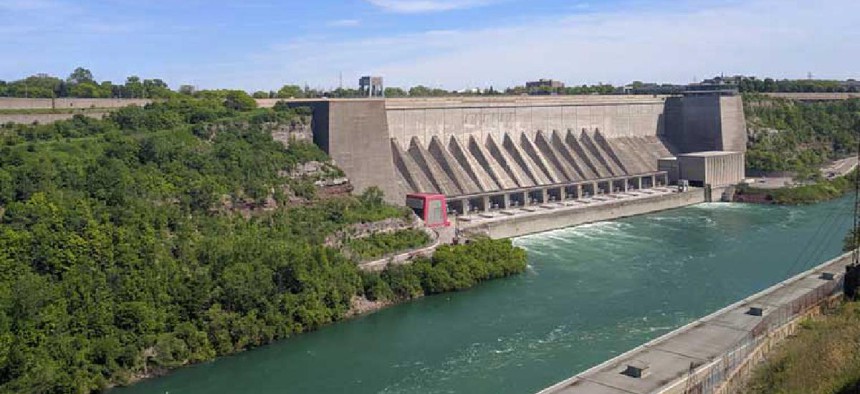New York, Argonne model climate-change impact on power grid

The project will deliver very specific climate predictions that will help officials understand vulnerabilities in the New York Power Authority’s grid to future climate impacts.
The New York Power Authority (NYPA) has partnered with Argonne National Laboratory to model the long-term effects of climate change on its system operations and its physical power generation and transmission assets.
Argonne will conduct the study using two main datasets: climate and grid infrastructure.
“The type of climate model that we run is called a dynamically downscaled regional climate model,” said Tom Wall, program lead for engineering and applied resilience in the Decision and Infrastructure Sciences Division at Argonne. “That’s important because it’s what we call a ‘physics-based model.’ Physics-based models are modeling the climate and atmospheric processes.”
For this project, Argonne is using a regional climate model of North America that has smaller pixel sizes representing 12 km-by-12 km square grid cells, as opposed to global models, in which pixels represent 100-km-square sections. With the smaller size, a model of North America has hundreds of thousands of squares, and each grid cell has dozens of equations that represent different atmospheric and climatologic processes, which are being regularly recomputed using an Energy Department supercomputer.
“We’re stepping forward in time in our climate model every three hours, so what happens in the first three hours of Jan. 1, 2050, what happens in the second three hours of Jan. 1, 2050, and then we run it for a couple decades,” Wall said. “It’s just a massive computational problem that couldn’t be done without a supercomputer.”
The result is very specific predictions about climate that enable Argonne to generate detailed projections about, say, flooding or soil moisture for drought models in a given area.
Adrienne Lotto, vice president and chief risk and resilience officer at NYPA, which is largely a hydropower-generation utility, wants to know how precipitation, ice and extreme heat could affect transmission grid lines over time. The grid is the “highways and freeways of the power system,” Wall added.
“We’re able to take climate model projects and input those into our transmission grid models -- sort of like a digital twin of NYPA’s grid system -- and look at the impacts that climate will have on that virtual model so we can better understand vulnerabilities in NYPA’s grid to future climate impacts,” he said.
By combining the climate data -- Argonne will query about a petabyte’s worth -- with the grid infrastructure data, the lab can model individual assets at the local as well as systems level. That’s crucial because a disruption to one substation could cause a power outage locally, but without that systems-level view, officials might not know if it would have cascading effects on other areas.
NYPA has never undertaken a climate study before, Lotto said. This one came about as part of the authority’s Vision 2030 strategy, which makes resilience a key pillar.
“We define resilience as being able to prepare for, respond to any disruptive event so that we could restore and provide services as quickly as possible,” Lotto said. “We have a very aggressive and robust plan over the next several years, both in the areas of distributed energy resources but also in terms of transmission buildout so that we can provide more clean energy in the state of New York.”
Included in that plan is a better understanding of the state’s climate to inform resource and asset allocation now and in the future.
Work on the project began before the pandemic, which put the work on pause. The lab and NYPA resumed the effort a couple months ago. Wall said he expects the climate modeling to continue through the end of the calendar year, when the infrastructure modeling will ramp up through the first part of 2022.
Meanwhile, the lab will provide intermediate deliverables, such as outcomes from the climate modeling that NYPA hydrologists might find useful, Wall said.
“I would like to believe that by the time the results are actually provided, there won’t be any surprises because there will be a continuous exchange of information between the lab … and us,” Lotto said.
The Electric Power Research Institute and Columbia University’s Center on Global Energy Policy will peer-review the results.
Argonne ran a similar project with AT&T using a climate analysis tool that combined data analysis, predictive modeling and visualizations in North and South Carolina, George and Florida. Another, conducted with Pacific Gas and Electric, focused on predicting conditions for extreme weather events that could trigger wildfires.
NEXT STORY: Wisconsin clears UI backlog with cloud-based AI





